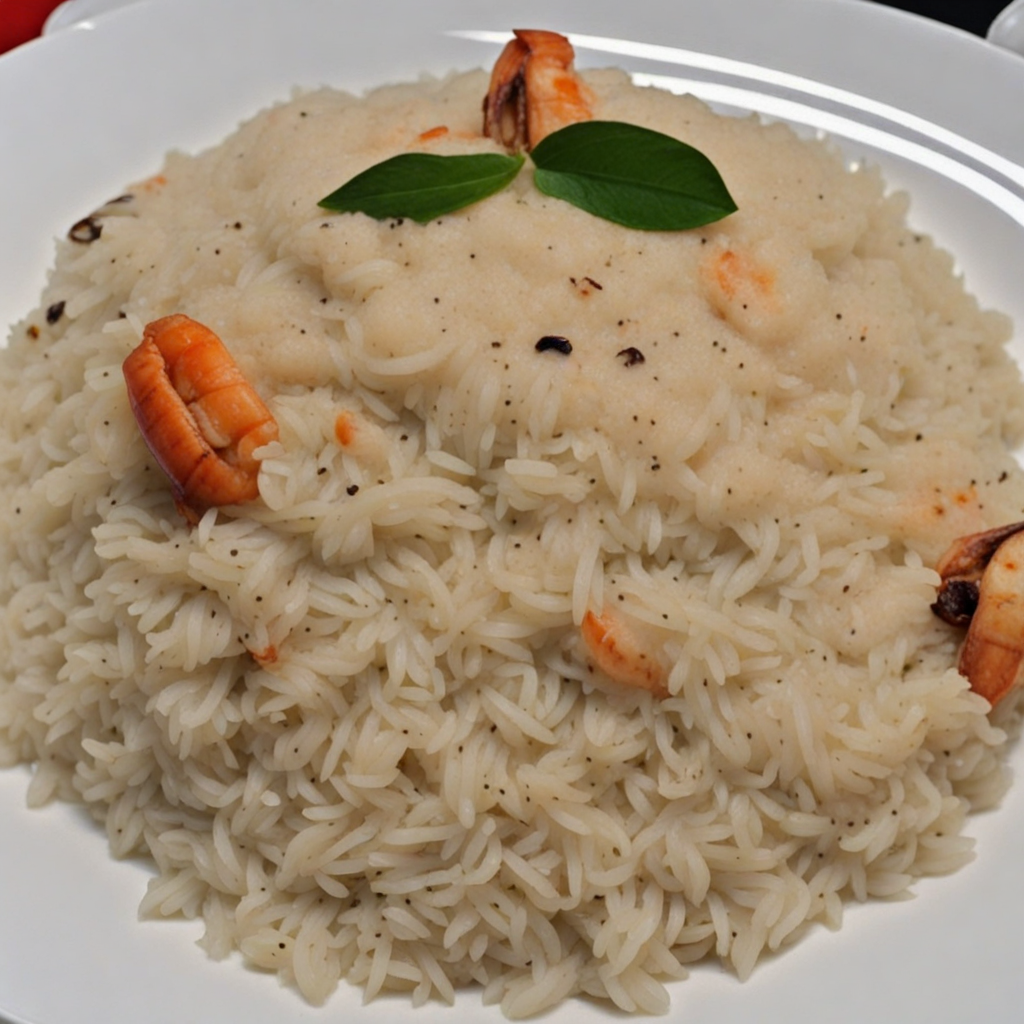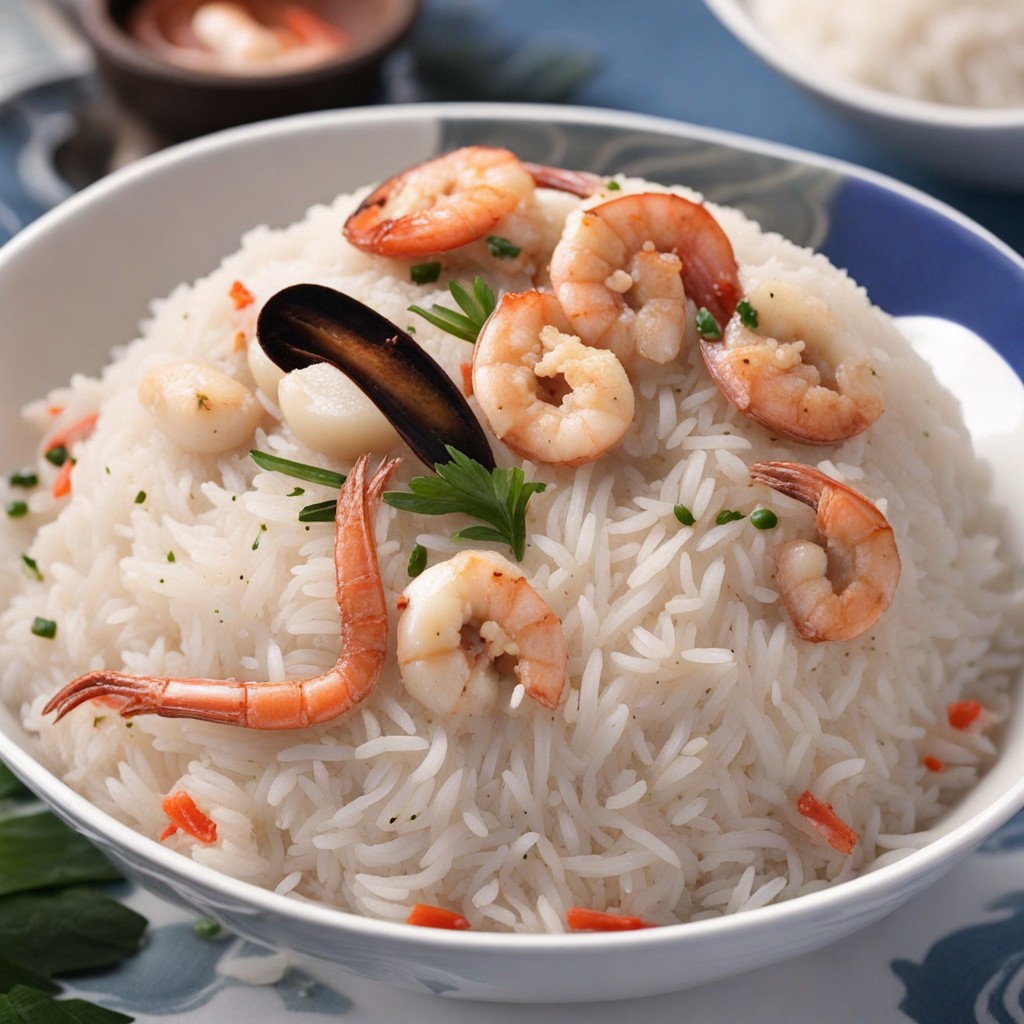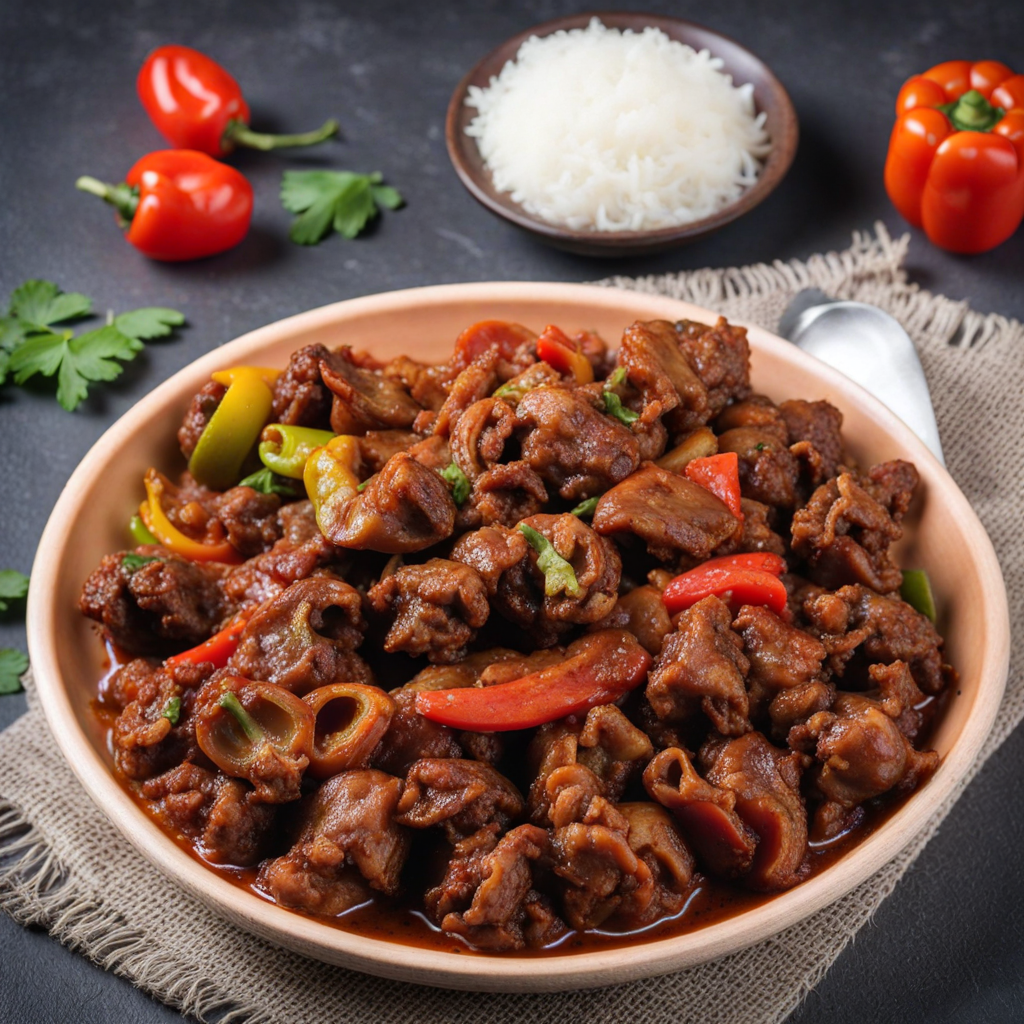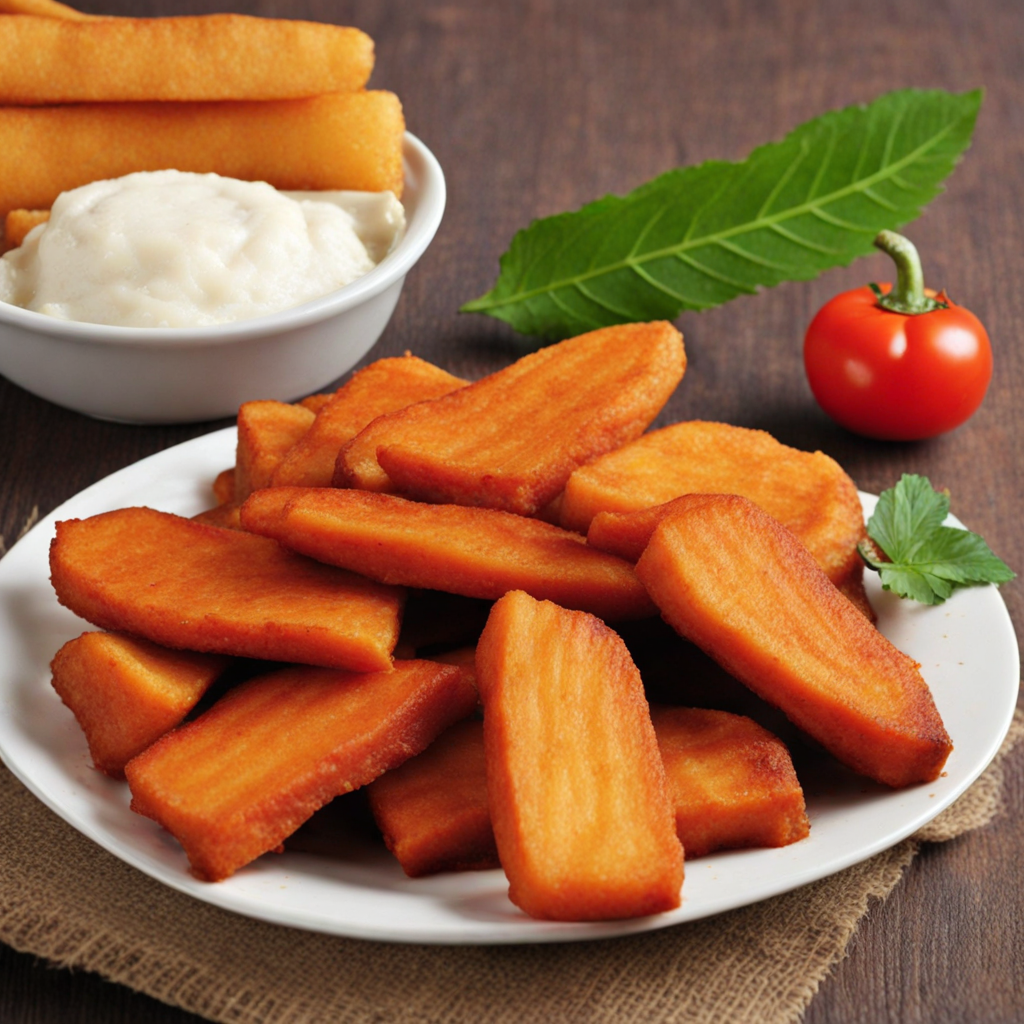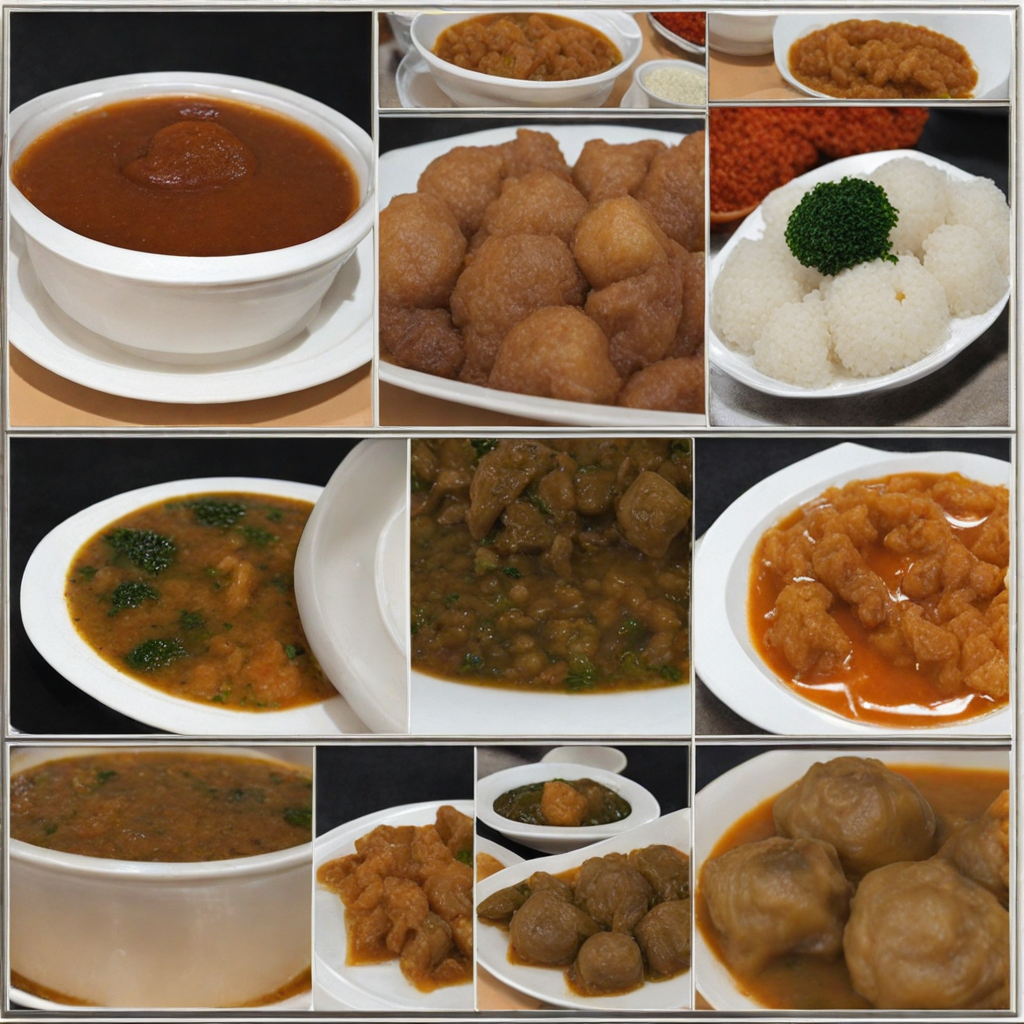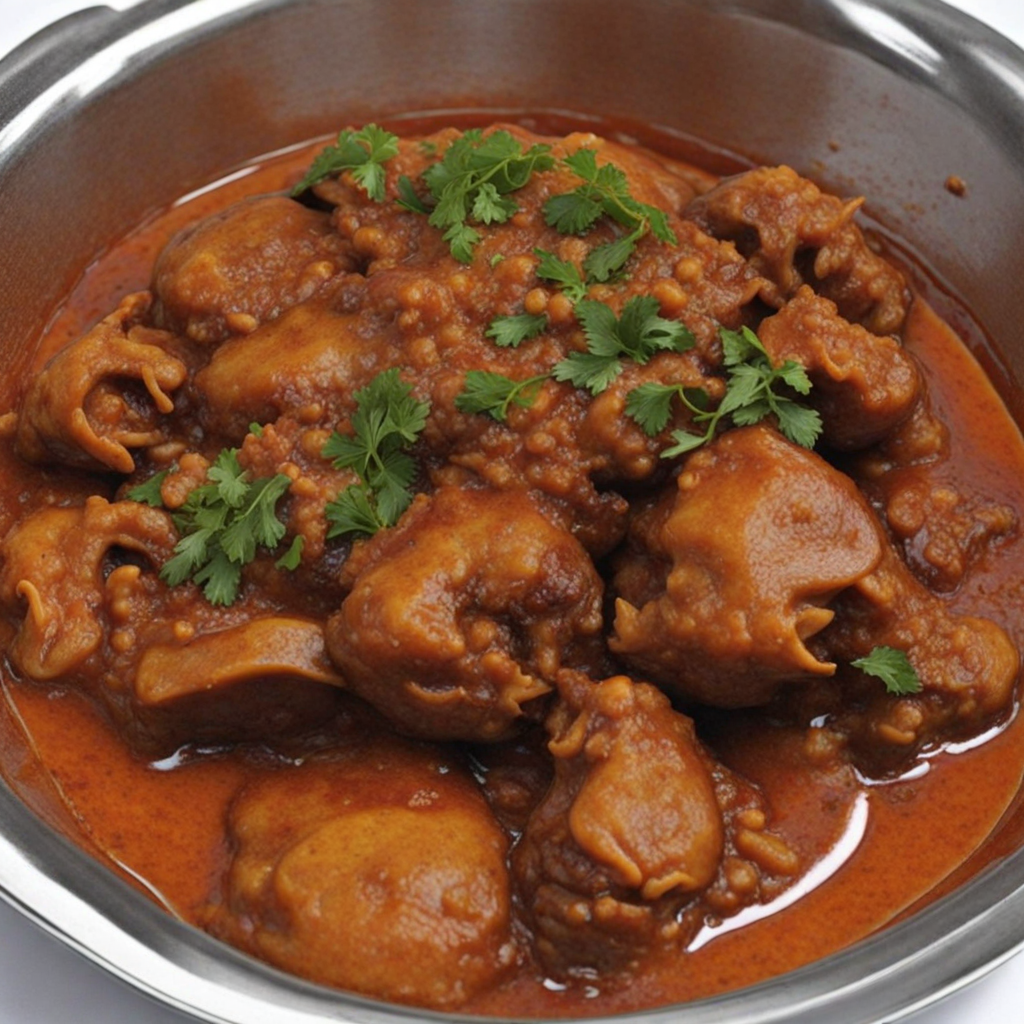Coconut Rice
Coconut Rice is a delightful Nigerian dish that beautifully marries the rich and creamy flavor of coconut with the heartiness of rice. The dish is prepared using long-grain rice, often parboiled to ensure the grains remain fluffy and separate. The magic happens when the rice is cooked in a luscious coconut milk, which not only infuses the grains with a tropical sweetness but also gives it a velvety texture. The addition of spices such as thyme, bay leaves, and sometimes a hint of chili elevates the dish, adding depth and warmth to every bite. The preparation of Coconut Rice often involves sautéing onions, garlic, and ginger in oil to create a fragrant base. Once the rice is added, it is combined with the coconut milk and simmered until perfectly cooked. This method allows the rice to absorb the sweet and nutty flavors of the coconut, while the aromatics provide a savory contrast. It's common to find this dish adorned with vegetables like bell peppers and carrots, which not only enhance the visual appeal but also contribute a delightful crunch and freshness to the overall dish. Coconut Rice is often served alongside a variety of proteins such as grilled chicken, fried plantains, or spicy stews, making it a versatile option suitable for any meal. The dish is particularly popular during festive occasions and gatherings, where its unique flavor profile and inviting aroma can captivate the senses of anyone lucky enough to be at the table. With its harmonious blend of sweetness and savory notes, Coconut Rice is a culinary treasure that invites you to explore the vibrant and diverse flavors of Nigerian cuisine.
How It Became This Dish
Coconut Rice: A Culinary Journey Through Nigeria Coconut rice, a fragrant and flavorful dish that has woven itself into the tapestry of Nigerian cuisine, showcases the interplay of local ingredients, cultural influences, and historical narratives. This dish, while commonly enjoyed today, has roots that extend deep into the diverse culinary traditions of Nigeria, reflecting the country’s rich agricultural heritage and the influence of trade and migration. Origins The origins of coconut rice can be traced back to the coastal regions of Nigeria, particularly in the southeastern states like Lagos, Rivers, and Akwa Ibom, where coconut palms thrive. The coconut tree, known as "Oluwa" in Yoruba and "Obi" in Igbo, is more than just a source of food; it holds a significant place in the cultures of the people in these regions. The fruit has been cultivated for centuries, believed to have been introduced to Nigeria by early traders and explorers from Southeast Asia and the Indian subcontinent, who recognized its versatility and nutritional value. Coconuts flourished in Nigeria’s humid climate, leading to their incorporation into local diets. The nut itself is used in various forms: the flesh can be grated and added to dishes, the milk can be extracted for cooking, and the water serves as a refreshing drink. Coconut rice emerged as a natural progression, combining the nut's rich flavor with the staple food of rice, which was introduced to Nigeria by Portuguese traders in the 15th century. Cultural Significance Coconut rice holds a special place in Nigerian culture, often served during festive occasions, family gatherings, and communal events. It transcends social classes, with each region adding its unique twist to the recipe. For example, in the Yoruba culture, coconut rice is frequently prepared for celebrations such as weddings and birthdays. The dish symbolizes abundance, community, and the joy of sharing food, reinforcing the strong communal bonds that are central to Nigerian life. In the context of Nigerian cuisine, rice is generally considered a luxury item, often reserved for special occasions. The marriage of rice and coconut elevates the dish, making it a sought-after delicacy. Coconut rice is often paired with proteins such as chicken, fish, or goat meat, as well as an array of vegetables, creating a balanced meal that is both satisfying and celebratory. Development Over Time As Nigeria experienced various historical changes, including colonialism, globalization, and urbanization, so too did the preparation and appreciation of coconut rice. In the mid-20th century, as urban centers like Lagos expanded, traditional dishes began to adapt to modern tastes and lifestyles. Coconut rice transitioned from being a dish primarily prepared for special occasions to a more commonplace meal enjoyed by families across the country. With the advent of the internet and social media, food has become a platform for cultural expression and exchange. Nigerian diaspora communities around the world have played a crucial role in popularizing coconut rice beyond national borders. Recipes have been shared, adapted, and reinvented, leading to a fusion of flavors that reflects the multicultural landscape of contemporary Nigeria. In recent years, there has been a resurgence of interest in traditional Nigerian foods, driven by a growing pride in local culinary heritage and a desire to promote indigenous ingredients. Coconut rice has benefitted from this revival, with chefs and home cooks experimenting with variations that include spices like curry or local peppers, giving the dish a modern twist while honoring its roots. Ingredients and Preparation Traditional coconut rice is a straightforward dish that highlights the richness of its key ingredients: rice, coconut milk, and spices. The base typically consists of long-grain rice, which is cooked in a mixture of coconut milk, water, and sometimes broth for added flavor. Aromatic ingredients like onions, garlic, ginger, and chili peppers are often sautéed to create a fragrant base before the rice is added. The preparation of coconut rice may vary from home to home. Some cooks incorporate vegetables such as bell peppers, carrots, and peas, while others might add proteins directly into the pot, allowing the flavors to meld during cooking. The dish is usually garnished with fresh herbs or toasted coconut flakes, adding a delightful crunch and visual appeal. Conclusion Coconut rice is more than just a dish; it is a representation of Nigeria’s agricultural bounty, cultural diversity, and historical evolution. Its journey from the coastal regions of Nigeria to the tables of families across the nation and beyond illustrates the dynamic nature of food as a vehicle for cultural expression and identity. As more people recognize the significance of traditional dishes like coconut rice, it is clear that this culinary heritage will continue to thrive, adapting to new contexts while honoring its past. Whether enjoyed at a festive gathering or a simple family meal, coconut rice remains a symbol of community, celebration, and the enduring richness of Nigerian cuisine. Its delightful combination of flavors and textures reflects not only the land from which it comes but also the people who have lovingly prepared and shared it throughout generations.
You may like
Discover local flavors from Nigeria


